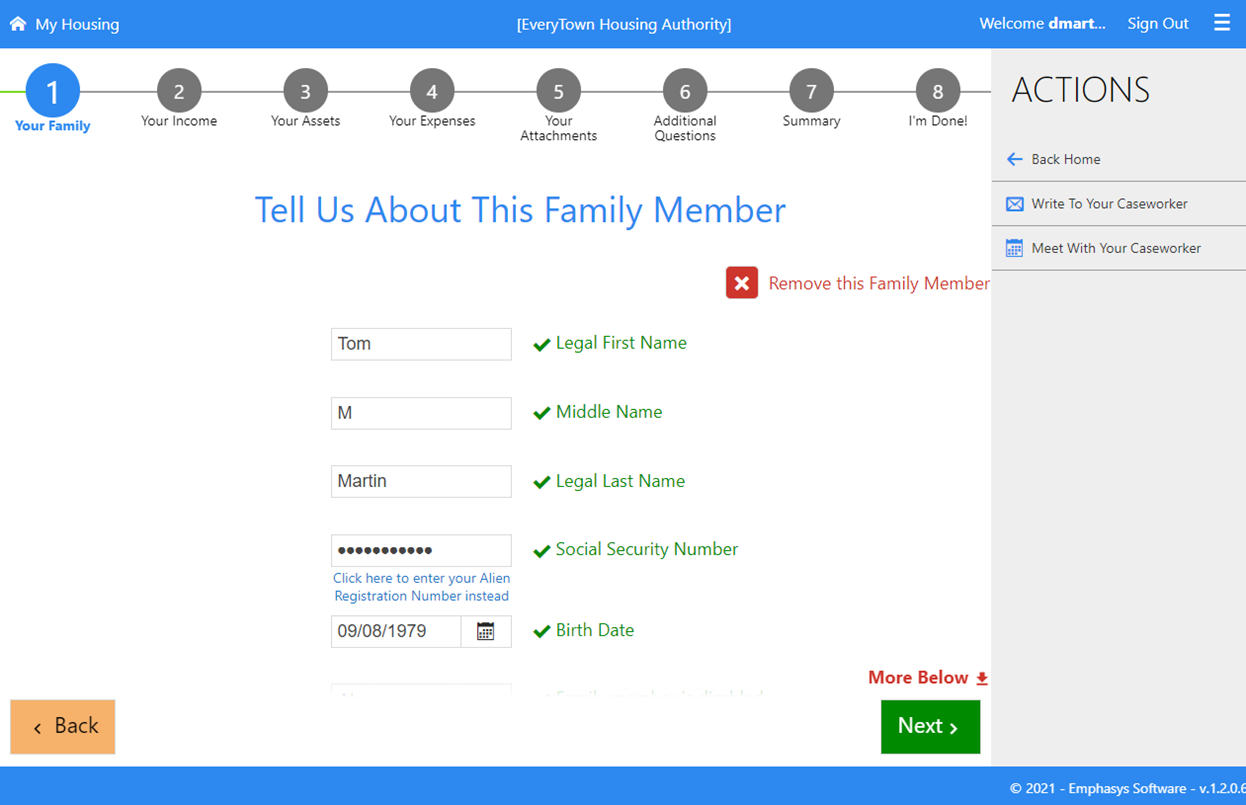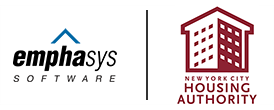 Frank and his son lose their jobs and his daughter moves out of the unit. Frank files an interim recertification requesting a financial hardship proration and minimum rent. NYCHA must determine his new HAP payment and utility allowance.
Frank and his son lose their jobs and his daughter moves out of the unit. Frank files an interim recertification requesting a financial hardship proration and minimum rent. NYCHA must determine his new HAP payment and utility allowance.

Use case: The system should allow for the head of household to trigger an interim recertification.
How it works: Frank can easily add or remove family members. The portal provides documentation online for Frank to download and complete to show financial hardship, too.
User definable fields can be tracked within the system to identify tenants who are going through financial hardship. Users can mark a box to remove the minimum rent portion, allowing for an actual calculation of the rental portion when it amounts to lesser than the minimum rent. Reports can be written to identify who has the box marked and/or who has a rental portion below the minimum tenant rent.

Use case: The system should validate that recertifications were completed and that HAP was calculated correctly.
How it works: The system is designed to provide the same validation as PIC. In addition, we configure the system to make the rent calculations match what HUD is requiring. The utility allowances pull based on the information set-up by the user, and Payment Standard pulls in automatically based on data setup by the user. The HUD calculation is then applied based on voucher size, gross rent, and payment standard.
Elite will allow for two certifications to be processed at one time. If an AR is being created and must be paused to insert an IR, Elite will allow for this action to take place.
Use case: The system should allow for processing different methods of HAP calculations including Financial Hardship Proration, Minimum Rent, and incorporating Utility Allowances.
How it works: HAP calculations can be customized to fit NYCHA’s needs. Prorations can be set by specific number of days or actual days. NYCHA can select what the minimum rent is for the entire program or apply specific minimum rents by bedroom size. There is a box that can be marked to indicate a financial hardship which will waive the minimum rent requirement and calculate the tenant rent accurately. The utility allowances are setup by administrators and the proper amounts will pull in based on the voucher size as required by HUD.
Use case: The system should be able to create/apply payment adjustments such as retroactive HAP payments to owners.
How it works: The Elite system does an excellent job to retroactive HAP payments. When a user makes adjustments, the system automatically detects what needs to be done in order to fix the situation. The system will allow for adjustments to be automatically and manually generated by a user. There is also a process that can be turned on that will require finance staff approval before the adjustment will be processed.
Use case: The system should allow the HA to review, assign, and approve requests.
How it works: Approvals are done once the certification goes through the validation process and the check list is complete. This triggers the approvals to occur. The system will allow for a caseworker to complete the certification, but not approve it for payment. The approval for the payment can then be completed by the supervisor after they review the caseworker’s entry.
User roles are very dynamic in the system and can be setup as needed by NYCHA. It will allow a user the right to view, insert, or delete for certain transactions. A user may have read access to waiting list, but read/write/delete access to the recertification module in the system.
